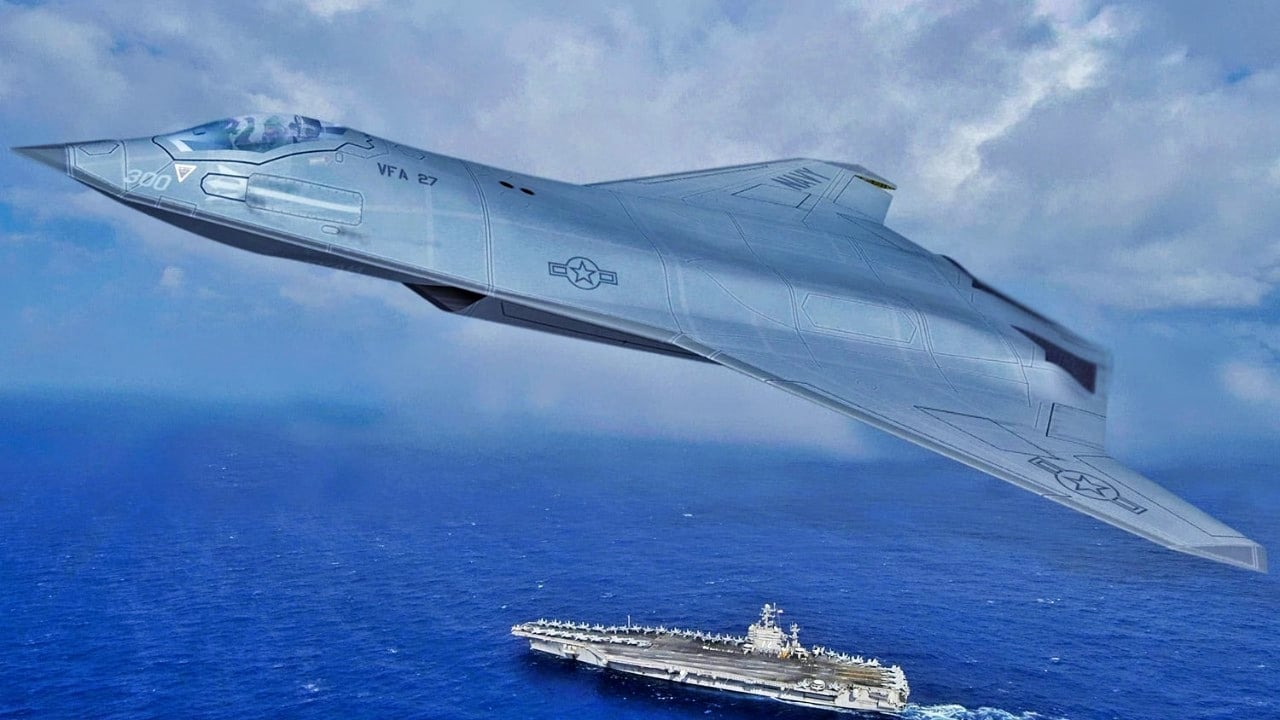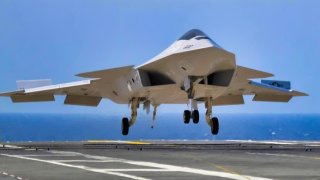The Navy's F/A-XX Fighter Program Is Self-Destructing Right Before Us
Congress is cutting 90% of the funding for the Navy's F/A-XX program, a proposed sixth-generation fighter jet. The program is seen as wasteful given the Navy's current budget issues, aging fleet, and scandals.
Summary and Key Points: Congress is cutting 90% of the funding for the Navy's F/A-XX program, a proposed sixth-generation fighter jet. The program is seen as wasteful given the Navy's current budget issues, aging fleet, and scandals.
-The F-35C, which entered service in 2019, remains the Navy's advanced carrier-based fighter, and its sustainment costs are decreasing.
-Instead of investing in a new, unproven F/A-XX, the Navy should optimize the use of its existing F-35C fleet and consider reviving the F-22 production for a Sea Raptor variant, which would benefit both the Navy and the Air Force.
Congress Wants to Cut the Navy’s F/A-XX Fighter Program by 90 Percent.
The United States Congress has had enough of the wasteful spending. Well, sort of. In this case, though, they’ve had it with the Navy’s next-generation carrier-based, manned warplane. Named the F/A-XX, the draft version of the National Defense Authorization Act (NDAA), which is how the military gets its funding from Congress, sees a staggering 90 percent cut in the funding for the Navy’s F/A-XX.
America’s Navy has struggled as of late, what with a declining fleet of warships, aging aircraft, shipyard woes, and a series of scandals (notably the infamous “Fat Leonard” case that ensnared countless numbers of senior Navy officials). Now comes the next blow to the service that will likely be the responsible for the immediate reaction to any Chinese provocation against Taiwan (if an American president decided to intervene militarily against a Chinese invasion of Taiwan).
What is the F/A-XX?
Dubbed as the Navy’s sixth-generation warplane, the F/A-XX program, which is a cousin of the United States Air Force’s Next-Generation Air Dominance (NGAD). The Air Force program is also in financial jeopardy. The Navy’s F/A-XX fighter, though, is facing a bleak prospect as a draft budgeting bill rends its way through the United States Senate, in which the Navy’s F/A-XX program faces a 90 percent funding cut.
The Navy’s air capabilities are in even more dire straits than are the Air Force’s. The Navy has blown a massive amount of money on their variant of the F-35 Lightning II. Meanwhile, they’ve got other fighters they are paying to maintain as well. But the F-35 was to be their next generation aircraft carrier plane. As recently as 2012, the Navy awarded a $39.3 million contract to Lockheed Martin to overhaul the F-35C’s air system design.
In fact, as my colleague Peter Siciu, rightly assessed in January of this year, the “F-35C remains the world’s first and currently only long-range stealth strike fighter designed and built explicitly for the U.S. Navy aircraft carrier operations.” Incredibly, the Navy’s variant of the F-35 only entered service in 2019!
The Navy says it needs the F/A-XX to stay ahead of the competition. But at what point does staying ahead of the competition simply break the bank? Besides, isn’t it a little bit interesting that the calls for this massively expensive new warplane for the Navy come at a time when the military is finally getting sustainment costs for the entire fleet of F-35s (all variants) down?
At least that’s what the Government Accountability Office (GAO) reported recently.
Specifically, the Navy has gotten sustainment costs to “about $700 million less apiece to fly than expected, and operating and sustainment costs for Navy F-35Cs are $1.7 million less than the target.”
The Navy doesn’t need so fantastical new warplane. They need to figure out how to better use the systems they have. Especially the F-35C, which they insisted upon building and spending gobs of tax dollars on over the years. Someone in Congress must be finally paying attention: just when the Navy is getting onerous costs down on F-35 operations, there are now conflict reports being made to the GAO about how the “projected costs for sustaining F-35s have continued to rise from $1.1 trillion in 2018 to $1.58 trillion 5 years later (a 44% increase). This increase is in part due to the extension of the service life of the aircraft.”
Not to worry, the Navy and the defense contractors of America have a solution: spend even more money on a system that doesn’t yet exist and will likely take years to produce and will probably have even more technical complications than even the F-35 does!
What the Navy Should Do
At some point, a plane just needs to be a plane. The Navy chose the F-35. It needs to stick with that system now. Build more of them, even, while reducing the other, older birds. And if the Pentagon insists upon blowing money on systems the Navy doesn’t have, it shouldn’t be on the mythical F/A-XX whose costs we will never know (other than that they’ll be far higher than what they’re projected to be).
Instead, the Navy should purchase an F-22 Sea Raptor for their carriers. This would not only give the Navy a serious advantage. It would also help to restart the production line for this most important warplane that former President Barack Obama wrongly canceled in 2009. In so doing, the Navy would be helping the Air Force.
Once that production line was restarted both the Navy and Air Force could expand the number of F-22s, the true game-changing aerial combat system that the US military possesses.

For once, Congress is protecting the taxpayer’s money from waste. Let’s just hope that they continue doing so under what will likely be a mounting pressure campaign. I say cut the Navy’s F/A-XX by 100 percent as opposed to just 90!
Author Experience and Expertise: Brandon J. Weichert
Brandon J. Weichert, a National Interest national security analyst, is a former Congressional staffer and geopolitical analyst who is a contributor at The Washington Times, the Asia Times, and The-Pipeline. He is the author of Winning Space: How America Remains a Superpower, Biohacked: China’s Race to Control Life, and The Shadow War: Iran’s Quest for Supremacy. His next book, A Disaster of Our Own Making: How the West Lost Ukraine, is due October 22 from Encounter Books. Weichert can be followed via Twitter @WeTheBrandon.
All images are Creative Commons or Shutterstock.
From the Vault
Russia Freaked Out: Why the U.S. Navy 'Unretired' the Iowa-Class Battleships
Battleship vs. Battlecruiser: Iowa-Class vs. Russia's Kirov-Class (Who Wins?)


